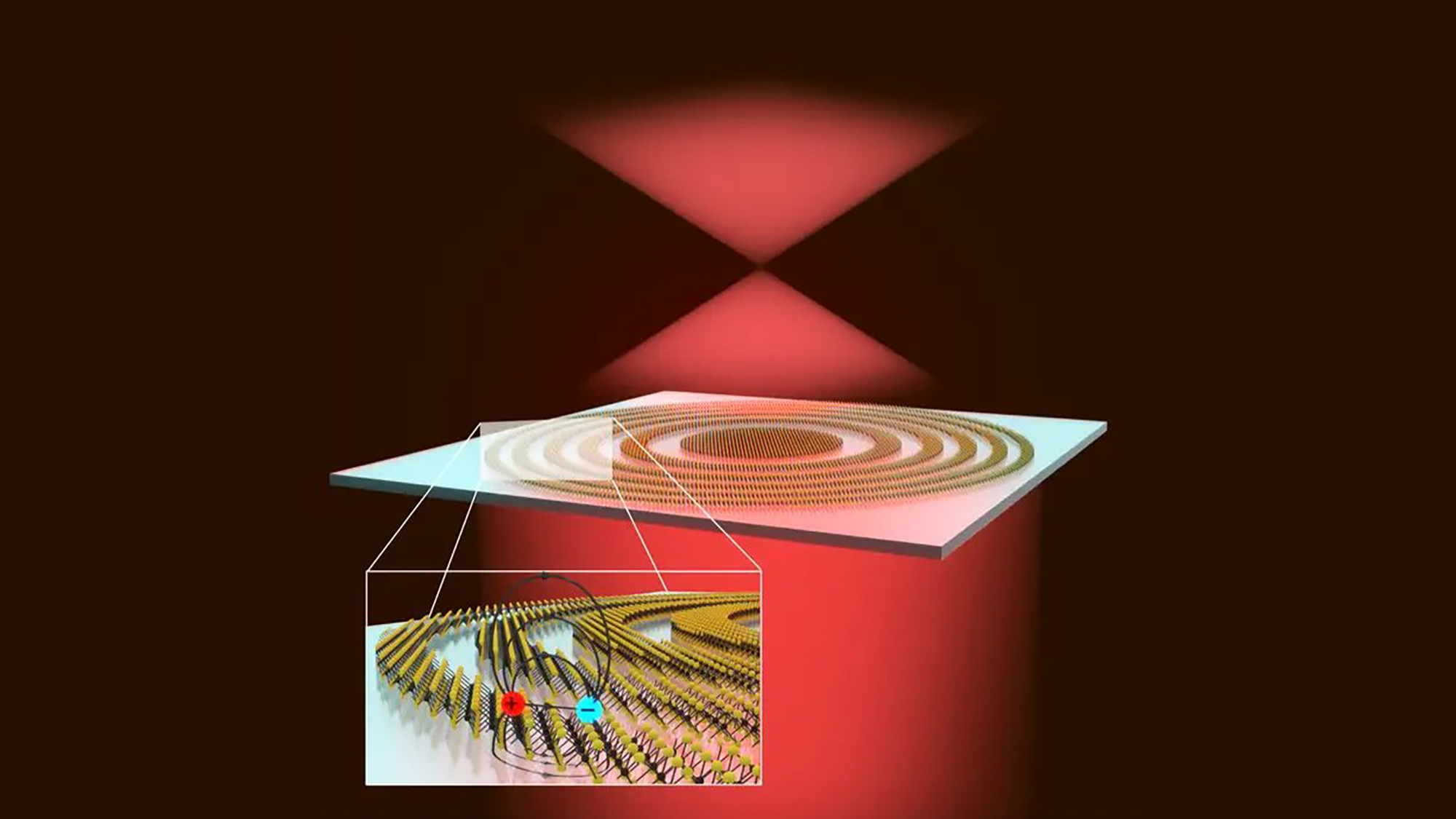A team of physicists collaborating between the University of Amsterdam and Stanford University combined the lighthouse engineering theory and electrostatically bound “excitons” to build the world’s thinnest lens. At 0.6 nanometers thick and half a millimeter wide, the design uses just three atoms of a special material called tungsten disulphide (WS2), whose quantum properties make it particularly suitable for forming atomic lattice work that resembles the flat “Fresnel lens” often seen in lighthouse lamps.
Most lenses for millennia have relied on a curved shape to refract light that passes through them to magnify objects. Fresnel lenses, however, don’t require curvature of any kind, but instead utilize concentric flat rings to diffract light, with the rings’ size and width determining the overall lens focal length. Fresnel lenses are often used with classic lighthouse lamps due to their ability to diffract light across large distances.
[Related: NASA’s next massive telescope could have a liquid lens.]
The physicists detailed their new atomic scale Fresnel lens in a study published last month in the journal, Nano Letters. In this design, the focusing power is derived from tungsten disulphide’s unique quantum effects which allow it to absorb and re-emit light across certain wavelengths. To achieve this, WS2 takes in light by firing an electron up to a higher energy level. Because the material is so small, however, the negatively charged electron and the positively charged space it leaves behind become bound into an atomic lattice through electrostatic attraction. These structures are known as “excitons” and only exist briefly before the electron and positive hole remerge, efficiently emitting light in the process. While this process works at room temperature, physicists found it to be especially effective in cryogenically cold environments as low as 14-degrees Kelvin (or -434.47 Fahrenheit).
During the team’s experiments, researchers were able to use their atomically thin 2D material to focus red light 1 mm away from the lens. While comparatively small at a human scale, that’s incredibly impressive given the lens diameter is only 0.0000006 mm.
But one of the design’s most promising features resides in what may initially sound like a flaw—only a small portion of the light is focused into a point, while most of it passes unaffected through the lens. As study co-author Jorik van de Groep explains, however, this could actually become a major advantage.
“The lens can be used in applications where the view through the lens should not be disturbed, but a small part of the light can be tapped to collect information,” he said in an accompanying statement. “This makes it perfect for wearable glasses such as for augmented reality.”
Although it’s unlikely atomic Fresnel lenses will find their way into Apple Vision Pro headsets anytime soon, researchers plan to next create and test more complicated and multi-use optical designs that they can adjust electrically.

